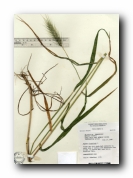
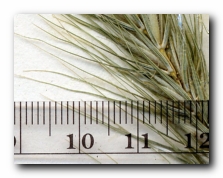
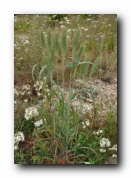
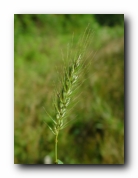
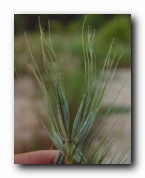
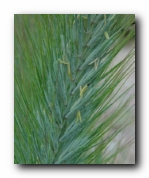
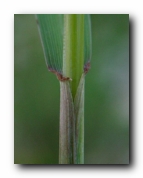
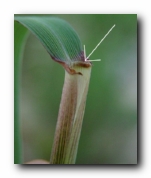
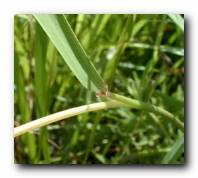
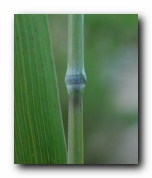
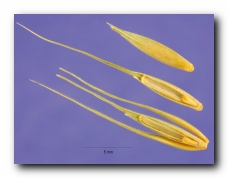
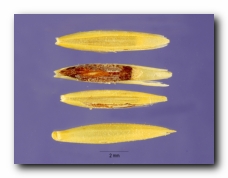
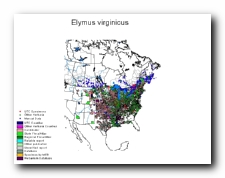
40" Rows:
Broadcast:
Sandy:
Loam:
Clay:
High
High
High
Habit: Tufted perennial.
Culms: 60-120 cm. tall, tufted, simple, rigid, erect, green or glaucous.
Blades: Flat, 10-30 cm. long, 4-15 mm. wide, auricled, scabrous especially
towards the tip.
Sheaths: Mostly shorter than internodes, the lower overlapping, the uppermost
often inflated and enclosing the base of the spike, glabrous or
sometimes the lower sparsely pubescent.
Ligule: Rigid, short membrane, truncate.
Inflorescence: Closely flowered cylindric terminal spikes 5-15 cm. long, about 12 mm.
thick usually erect, often included at the base in the upper sheath.
Spikelets: Usually 2 at each node, 3-5-flowered, sessile at the alternate notches
of the continuous rachis; rachilla articulated above the glumes and
between the florets.
Glumes: 2, equal, about 12 mm. long, linear-lanceolate, strongly nerved about,
firm, indurate, yellowish, placed edge to edge in front or toward the sides
of the florets, nerveless and bowed out at the base leaving a rounded sinus,
broadened above, scabrous, the apex somewhat curved, tapering into a
straight awn about as long as the body or shorter.
Lemmas: Lower 6-8 mm. long, glabrous and nerveless below, scabrous and nerved
above, oblong or lanceolate, rounded on the back, tapering into a straight
scabrous awn 4-18 (usually about 10) mm. long.
Palea: Elliptic, ciliate, a little shorter than its lemma.
Fruit: Grain hairy at the summit, adherent to the lemma and palea.
Habitat: Moist soil, low woods and along streams. June-August.
Range: Newfoundland to Alberta, south to Florida and Arizona.
Synonyms: Elymus virginicus L. var. virginicus
Elymus australis Scribn. & Ball
Elymus glabriflorus (Vasey) Scribn. & Ball
Elymus hirsutiglumis Scribn.
Elymus jejunus (Ramaley) Rydb.
Elymus striatus Willd.
Elymus virginicus L. var. australis (Scribn. & Ball) A.S. Hitchc.
Elymus virginicus L. var. glabriflorus (Vasey) Bush
Elymus virginicus L. var. hirsutiglumis (Scribn.) A.S. Hitchc.
Elymus virginicus L. var. intermedius (Vasey) Bush
Elymus virginicus L. var. jejunus (Ramaley) Bush
Special Notes:
Virginia Wildrye (Elymus virginicus) Information #2
Virginia Wildrye (Elymus virginicus) Information #3
Virginia Wildrye (Elymus virginicus) Information #4